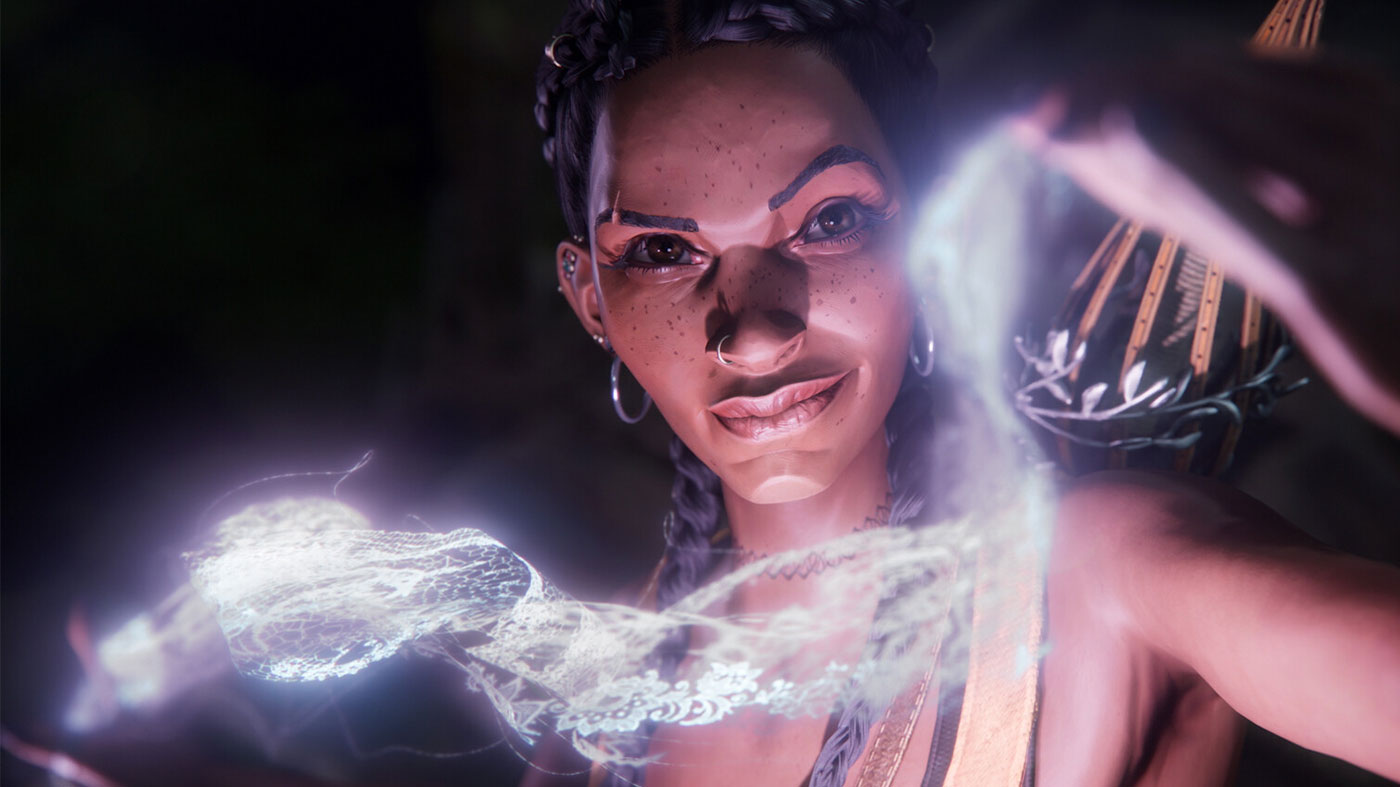When I covered We Happy Few, Compulsion’s last game as an independent studio before their acquisition by a certain lean, green studio-eating machine, I lamented on the fact that more than a few of their gameplay design choices managed to hamstring what was a wonderful setting in Wellington Wells. South of Midnight, which itself is very much an anthology on healing delivered through the framework of Southern Gothic folklore, fittingly feels like the zenith of Compulsion’s redemption arc—and their cathartic emergence as a potential kingmaker for Xbox, who have desperately longed for a game like South of Midnight.
Set in Prospero, a non-specific, whimsical sliver of the Deep South, South of Midnight very much follows Hazel down the proverbial rabbit hole into a world where old folktales aren’t confined to the stories through which they trickle down generations. Like Alice in Wonderland, our heroine tumbles into a land of extraordinary things all in the pursuit of her mother who got swept down river by a hurricane. The story, which focuses on the healing power of empathy and walking a mile in another’s shoes, is irresistibly paced, and the urgency of Hazel searching for her mama is felt with the narrative unfurling over a single day.
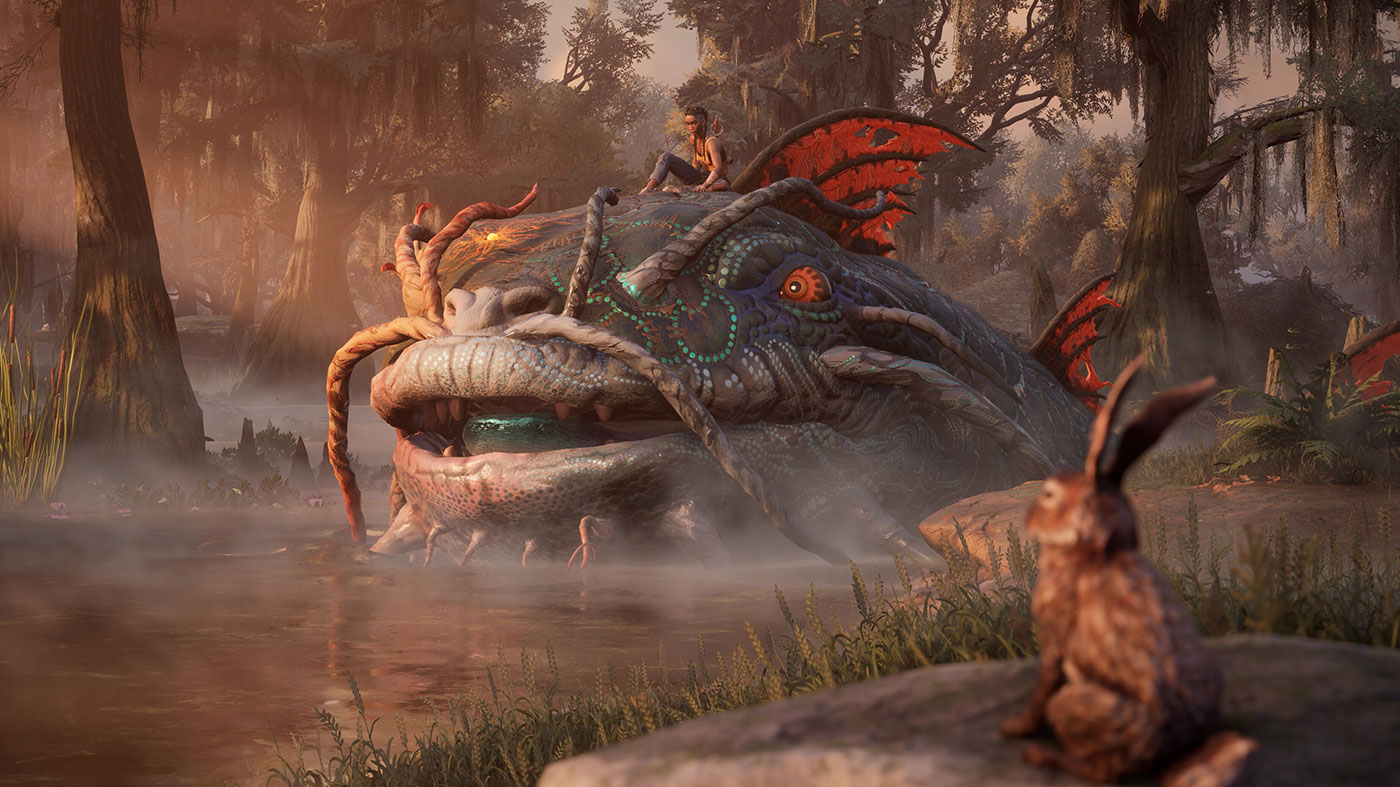
Hazel Flood is very much the game’s leading lady with Adriyan Rae, whose rather modest acting credits to date include small appearances on acclaimed shows like Atlanta, turning in a genuine, authentic performance as the fish out of water heroine. That said, while her search might prove to be the story’s heart and necessary through-line to build the world around, it’s the several other stories that make up South of Midnight’s mythos that are most memorable—whether it’s a small tale of a betrayed brother sealed within a tree by his duplicitous brother, or the incomprehensible heartache of a mother’s loss of her infant, tragedy and sadness permeates the quaint town of Prospero and it’s, more often than not, a profoundly touching narrative.
After discovering her latent ability as a weaver, Hazel’s perception enhances far beyond the regular world as she becomes attuned to the “Grand Tapestry”—this game’s cool-as-heck descriptor for the fabric of this particular universe. More than that, she’s able to perceive tears and tangles in the cosmic makeup of her surroundings, which are often left behind in the form of knots brought about by immense, intense traumas. I adore it as a concept, as mending the world’s wrongs through kindness and healing is a worthwhile message to put into the world, and as a basis for a video game setting it’s as creative and engrossing as any I’ve seen this year.

These knots within the world, often surrounded by a pinguid barrier and harsh brambles called “stigma”, tie directly in with how Compulsion has handled combat in South of Midnight. As an experience, it keeps its core gameplay tenets, being traversal and combat, separate from each other. The game quickly works into a rhythm of expositing the ‘need-to-know’ information during traversal while leaving combat to be the action focus of the game. It’s great in a way, as it gives Prospero and these bite-sized tales room to breathe, however, it does allow for the combat to be criticised in isolation.
I expect a common complaint of South of Midnight might involve its combat, which is, in a word, basic. It’s inoffensive, it gets the job done, and I wholeheartedly believe it’s justified within the narrative to be arena-based, though it does grow repetitive by the third or fourth major area, which each have a few big battles gating every story beat. It’s only because the narrative is so strong that I bemoaned some of the fights near the end—I’d almost compare it to Uncharted in a way, which never had anyone writing home about the gunslinging.
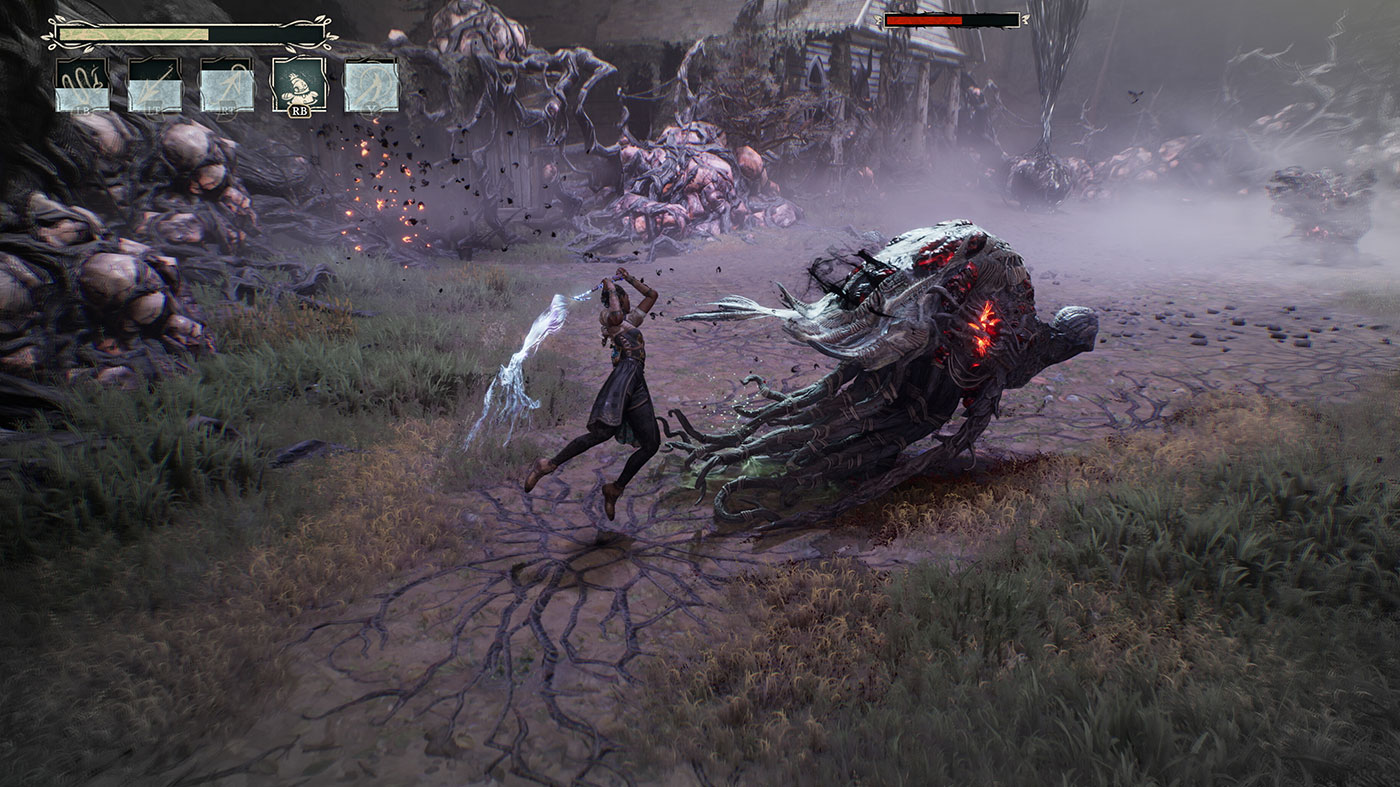
I think previews painted a more dire image of combat than the final product presents, though. Fresh haint variants are introduced practically up until the very end, and if you’re active in spending ‘floofs’, the game’s single-purpose currency, on upgrades to either Hazel or Crouton, her tiny partner-in-crime who spends much of his time burrowing into hard-to-reach spots, it’ll never be boring. As it is a game about healing, not every mythical creature Hazel runs across culminates in a boss battle which, I must say, is a shame because it was during my tangle with Two-Toed Tom, to draw from the one publicised example shown off pre-launch, where combat felt most engaging and dynamic.
Traversal through Prospero, while similarly safe and simplistic, accounted for more of the moments I’ll remember from South of Midnight. Just as the game introduces enemies at a respectable clip, it, too, steadily empowers the player with so many means of movement that, by the end, platforming felt like a puzzle unto itself. By the end, I was chaining double jumps, glides, and grapple hooks in a flurry of smooth movement that felt truly satisfying. Coupled with the ledge-hanging parkour, it felt like the movement from an early Assassin’s Creed pasted into the semi-linear areas of the rebooted Tomb Raider games.

Drinking in the world is made so much easier due to how unbelievably good-looking it all is. The characters have a hand-crafted, almost exaggerated, graphic novel-like charm to them, though I’d say it’s the mythical creatures themselves that stand out. The Catfish, who narrates most of the tale while accompanying Hazel on her journey, has a cool steampunk look, which is capped off with a quasi-celestial globe for an eye, while Huggin’ Molly’s enormous arachnid frame and many eyes are sure to provide nightmare fuel for those not fond of eight-legged freaks.
The most gorgeous character of all, though, is Prospero itself. I’ve never seen a better argument for baked-in lighting than South of Midnight, which serves up breathtaking view after breathtaking view. Whether it’s a vibrant, flower-carpeted field or a dilapidated pig farm, it’s quite an ‘every frame a painting’ kind of art piece.
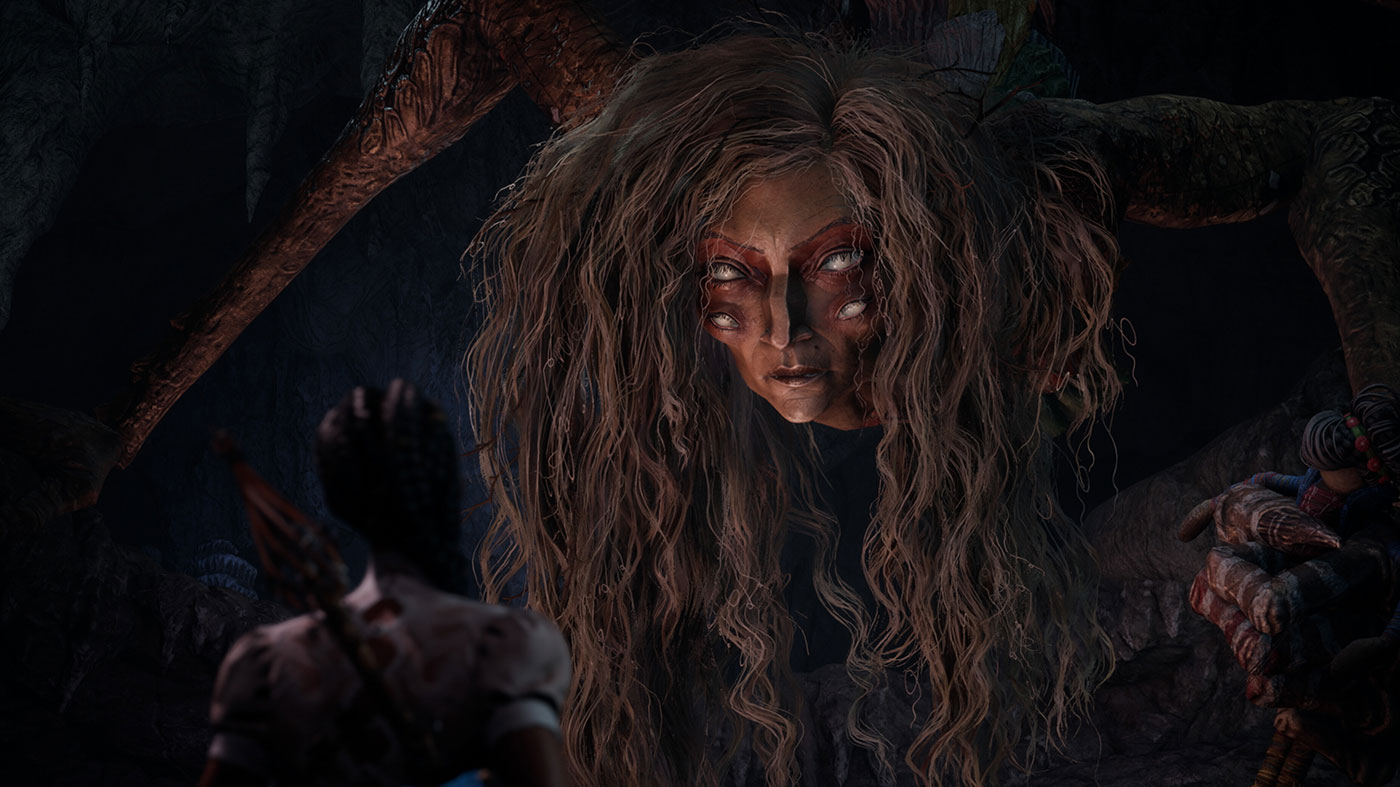
Its tremendous audiovisual package is topped off by an incredible soundtrack that delivers a moving score that swells at all of the right moments to complement the many gut punches of the narrative. As great as it is, the star of South of Midnight comes in the form of short, bespoke, original lyric-driven arrangements that serve to recap and reiterate the trauma you’re working to untangle.
They lend an enormous amount of character and sense of place, I couldn’t help but adore each track as it embedded a raw, unique feeling into its respective stage. Of course, you could listen to the soundtrack, but hearing them within the context of a scene, with the intent to inflame and draw emotion from you, is absolutely what I’d recommend.
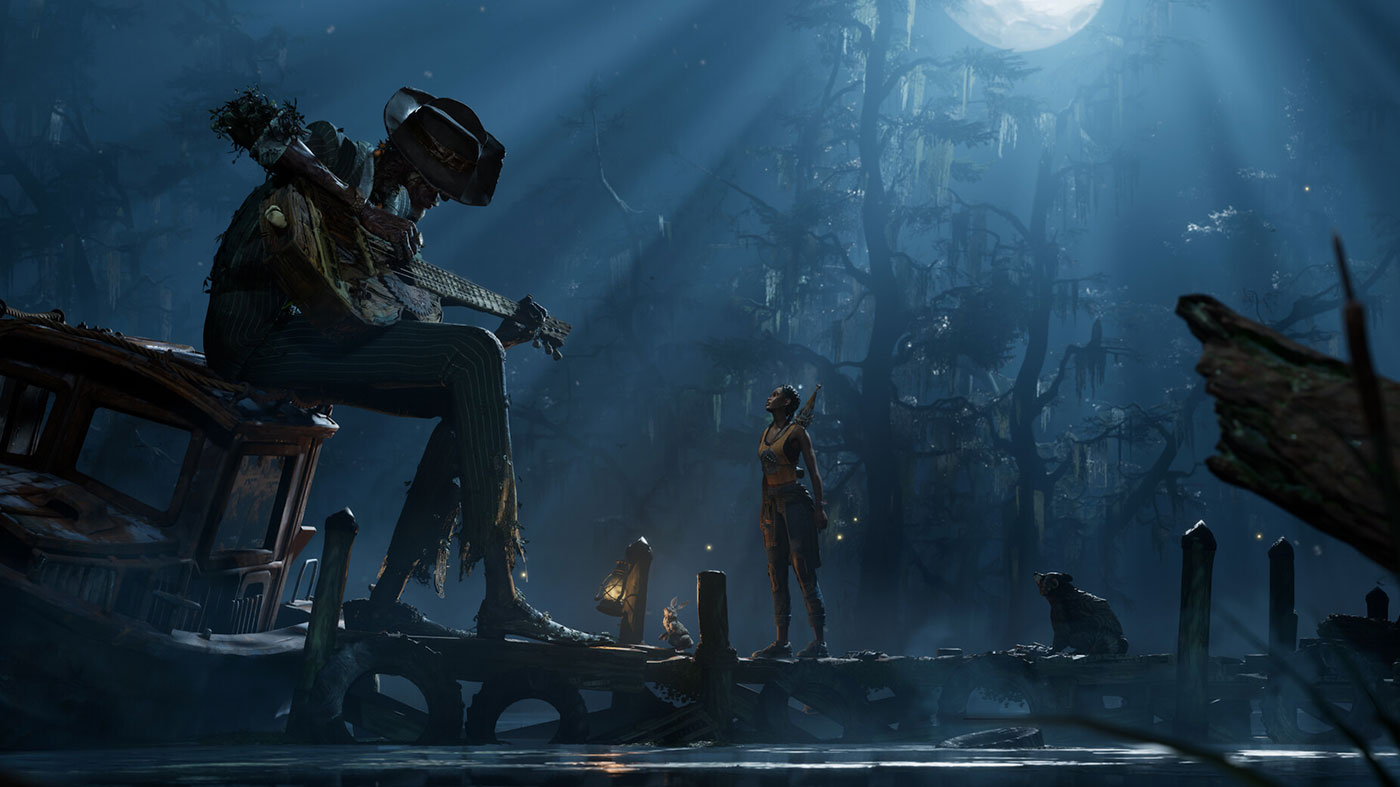
While the act of banishing haints might be a still enjoyable weak link, South of Midnight delivers an impossible level of polish throughout its every other facet. The world is full up of wonder and fancy, it’s hard not to be drawn in by its sublimely realised, evocative elements that, all together, champion the power of catharsis. Undeniably a cut above their debut and sophomore titles, Compulsion has arrived with South of Midnight. While putting the industry on notice, they’ve graduated from the scrappy studio that could to the scrappy studio that does.





























